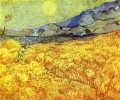Artists

Vincent van Gogh
- Country:
- Netherlands
- Birth year:
- 1853
- Death year:
- 1890
-
 $AU 202.44 ~ 812.29
$AU 202.44 ~ 812.29 -
 $AU 249.08 ~ 980.24
$AU 249.08 ~ 980.24 -
 $AU 213.84 ~ 668.32
$AU 213.84 ~ 668.32 -
 $AU 249.77 ~ 986.23
$AU 249.77 ~ 986.23 -
 $AU 627.47
$AU 627.47 -
 $AU 250.08 ~ 989.15
$AU 250.08 ~ 989.15 -
 $AU 246.23 ~ 954.97
$AU 246.23 ~ 954.97 -
 $AU 249.49 ~ 983.83
$AU 249.49 ~ 983.83 -
 $AU 634.64
$AU 634.64 -
 $AU 251.51 ~ 1,001.47
$AU 251.51 ~ 1,001.47 -
 $AU 245.34 ~ 946.92
$AU 245.34 ~ 946.92 -
 $AU 627.98
$AU 627.98 -
 $AU 402.41
$AU 402.41 -
 $AU 248.76 ~ 977.33
$AU 248.76 ~ 977.33 -
 $AU 245.86 ~ 991.88
$AU 245.86 ~ 991.88 -
 $AU 627.47
$AU 627.47 -
 $AU 278.71
$AU 278.71 -
 $AU 251.53 ~ 1,001.82
$AU 251.53 ~ 1,001.82 -
 $AU 251.53 ~ 1,001.82
$AU 251.53 ~ 1,001.82 -
 $AU 340.98
$AU 340.98 -
 $AU 254.34 ~ 1,026.74
$AU 254.34 ~ 1,026.74 -
 $AU 252.71 ~ 1,012.27
$AU 252.71 ~ 1,012.27 -
 $AU 252.46 ~ 1,009.87
$AU 252.46 ~ 1,009.87 -
 $AU 238.61 ~ 887.41
$AU 238.61 ~ 887.41 -
 $AU 310.16
$AU 310.16 -
 $AU 261.76 ~ 1,092.17
$AU 261.76 ~ 1,092.17 -
 $AU 250.69 ~ 994.38
$AU 250.69 ~ 994.38 -
 $AU 245.86 ~ 951.55
$AU 245.86 ~ 951.55 -
 $AU 243.92 ~ 934.68
$AU 243.92 ~ 934.68 -
 $AU 231.52 ~ 824.71
$AU 231.52 ~ 824.71 -
 $AU 245.86 ~ 951.55
$AU 245.86 ~ 951.55 -
 $AU 250.42 ~ 991.88
$AU 250.42 ~ 991.88 -
 $AU 240.24 ~ 939.65
$AU 240.24 ~ 939.65 -
 $AU 246.98 ~ 961.64
$AU 246.98 ~ 961.64 -
 $AU 238.02 ~ 882.26
$AU 238.02 ~ 882.26 -
 $AU 243.05 ~ 965.76
$AU 243.05 ~ 965.76 -
 $AU 223.28 ~ 950.70
$AU 223.28 ~ 950.70 -
 $AU 234.00 ~ 846.62
$AU 234.00 ~ 846.62 -
 $AU 226.28 ~ 778.28
$AU 226.28 ~ 778.28 -
 $AU 239.66 ~ 896.90
$AU 239.66 ~ 896.90 -
 $AU 540.37 ~ 2,331.82
$AU 540.37 ~ 2,331.82
Van Gogh is generally considered one of the greatest painters in the history of European art. In his early years he tried different professions including as clerk in Goupil and Co art company in Hague and London, teacher of French, German and Arithmatic at a school in Ramsgate, England, He later worked in bookshop in Tolbrugstraatje, He started studying theology in 1876 and after certain changes, failures and rejections quited religious duties in 1880 and decided to become an artist and worked with great passion joined Academie des Beaux-Arts in Brussles. He had a turbulent life and moved to Hague with a pregnant prostitude and commissioned some works for his uncles for their art galleries. We lived a poor life and had to be taken to a mental institution for his halucinations. His work shows the objects, people and places in his life with bold, usually distorted, draughtsmanship and visible dotted or dashed brushmarks, which are intensely yet subtly coloured. He produced all of his work (some 900 paintings and 1100 drawings) during the ten year period before he committed suicide. Most of his best-known work was produced in the final two years of his life. In the two months before his death he painted 90 pictures. Grouped by critics with the Post-Impressionists, a pioneer of what came to be known as Expressionism, Van Gogh has had an enormous influence on 20th century art, especially in the early part of the century, when many paintings of the Fauves and German Expressionists, particularly Die Brücke are highly derivative. His energetic approach to the painted surface follows a lineage to the Abstract Expressionism of Willem de Kooning and beyond. Van Gogh became obsessed by the symbolic and expressive values of colors and began to use them for this purpose rather than, as did the Impressionists, for the reproduction of visual appearances, atmosphere, and light. `Instead of trying to reproduce exactly what I have before my eyes,' he wrote, `I use color more arbitrarily so as to express myself more forcibly'.


